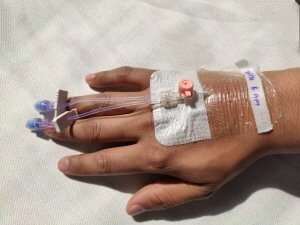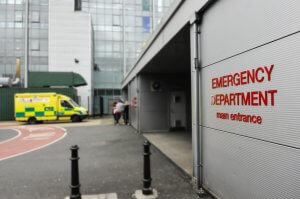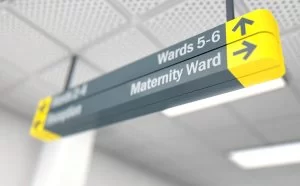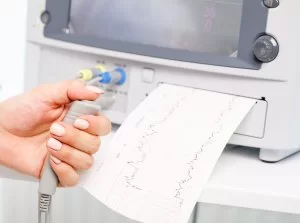Delays in removing Ureteric Stents

Contact
Table of Contents
In February 2020, the Health Care Safety Investigation Branch (HSIB) published an interim bulletin in relation to the ‘Unplanned delayed removal of ureteric stents’. I was interested in this as I have had quite a few medical negligence cases, whereby female patients have suffered an injury to the ureter during routine surgery and this has not been spotted until quite some time after the initial injury to the ureter. This in turn led to urine leaking into the internal cavity and all of the clients having to undergo complex urinary surgery to repair the damage.
This complex surgery in all cases required insertion of a ureteric stent.
The stent is a thin tube which is inserted into the ureter to keep it patent and prevent or treat obstruction of the urine flow from the kidney. In the cases I was involved in the ureter had been accidentally cut and the stent enabled the ureter to be repaired and allow it to heal once sutured back together. In many cases stents are used when there is blockage of the ureter due to kidney stones; external compression, scarring etc.
In all cases the stent was temporary and had to be removed within a specific time frame. In all cases this did not happen and the stents were left in for too long. In one case the stent had been left in for nearly a year in error and this caused my client to suffer inflammation which led to urgency and frequency of urination.
The HSIB received a Safety Awareness Notification from a large teaching NHS Trust as there was an issue at that NHS Trust with the retention of ureteric stents not being removed in a timely fashion which led to the stent becoming ‘encrusted’ which caused the patient harm and leads to them possibly having to have the stent removed by a urologist under a general anaesthetic. That is exactly what happened in each of my cases.
The HSIB report quotes a paper by Bultitide et al (2003) which says:
‘If a ureteric stent is left in for a long time it can become more difficult to remove, leading to a longer hospital stay, extended recovery time and is associated with increased morbidity. It can affect a patient’s long –term kidney function and can lead to iatrogenic loss of a kidney (loss of an organ due to medical intervention). If bilateral, loss of both kidneys can occur necessitating dialysis of transplant.’
Safety risks of stents
The report referred to a case which involved a patient with a complex medical health history who had a ureteric stent in situ for over a year and the stent had become severely encrusted and had affected the patient’s kidney function. This case highlighted potential national safety risks and included:
- The use of stent registries
- Patient communication
- Kidney/ureteric stone care in hospitals
- Waiting times and access to clinic appointments
- Provision of non-medical support staff to support the kidney/ureteric stone care pathway
Further the HSIB report highlighted the ‘Getting it Right First Time’ on urological services and this revealed that out of the 140 hospital trusts providing urology services there was ‘significant’ variation in clinical practice. This means that they are not all doing the same thing. Hence, this leads to human error and one of the issues identified related to a how the insertion of stents was being recorded. Some hospitals using a stent register and some are not.
The other issue was that some patients did not understand the purpose of the stent or the consequences of the delay in removal. In one of my cases, my client’s first language was not English. She did not speak any English and therefore was unaware that the stent had been left in for too long. In fact, if had nearly been a year before it was removed.
GP’s should also know if their patient has a stent and for how long it is supposed to be in situ. The HSIB report highlighted the issue of tracking stents. It therefore makes sense if the patient and GP are informed and are aware of when the stent has to be removed, then the treating hospital doctor can be chased up if an appointment for removal is not fixed in a timely manner.
If a patient has other underlying health issues, such as cancer; cardiac problems etc this may distract from the urological pathway. They may end up getting ‘lost in the system’ because their other medical health needs are being focussed on.
The HSIB is continuing to explore the identified safety issues and its investigation will focus on:
‘The pathways of care for patients:
- With acute presentations of kidney stones
- Undergoing planned surgery for kidney or ureteric stones, including how ureteric stents are used, registered, monitored and removed.
As well as the arrangements for patients being followed up as an outpatient. This will be limited to the factors relevant to stones and stents as HSIB are currently undertaking an investigation which will look in detail at outpatient booking arrangements and follow-up’.
We await the final report and hope that the report will create consistency for all 140 hospital trusts with urological services.
We are by your side
Our medical negligence solicitors provide legal support that you can trust. If you have been injured due to a medical accident, our lawyers can help get your life back on track.
Share this article
Related InsightsVIEW ALL
- 30.10.2025
Addenbrooke’s Hospital Complaints
Review finds harm to children by surgeon at Addenbrooke’s Hospital An independent review by Cambridge University Hospitals NHS Foundation...
Read more - 1.10.2025
Jess’s Rule Rolled Out in England to...
Jess’s Rule establishes a “three strikes and rethink” approach for GP practices to prevent avoidable missed diagnoses deaths. The...
Read more - 2.9.2025
New Medical Negligence Head for Osbornes to Spearhead...
Hugh Johnson joins Osbornes Law to lead the firm’s medical negligence team Hugh Johnson has been appointed as new...
Read more - 27.8.2025
HSSIB Review Exposes NHS Maternity Failures
Patient safety body HSSIB publishes exploratory review of maternity and neonatal services As Head of Paediatric and Birth Negligence cases...
Read more - 12.5.2025
Complaints Against Suspended Surgeon Ms Kuldeep Stohr
Ms Kuldeep Stohr, orthopaedic surgeon at Addenbrooke’s Hospital suspended In February 2025, Cambridge University Hospitals NHS Foundation Trust (CUH) confirmed...
Read more - 4.4.2025
Time To Move On From Physician Associates?
BMA raises concerns over patient safety: the risks of Physician and Anaesthesia Associates in the NHS The British Medical Association (...
Read more - 19.9.2024
Report highlights failings in maternity care
The Care Quality Commission (CQC) has recently carried out a national review of 131 maternity inspections between 2022 and 2024, finding that failures...
Read more - 30.7.2024
What Is the Role Of a Physician Associate?
What does the Position of Physician Associate Mean for the NHS? There are many different jobs within the NHS, each...
Read more - 11.1.2024
New UK Supreme Court Ruling regarding Secondary Victims...
The Supreme Court has today, on the 11th January 2024, upheld the Court of Appeal’s order to dismiss the claims...
Read more - 11.1.2024
Secondary Victim Claims
Secondary victims in clinical negligence cases What is a secondary victim in clinical negligence cases? Most compensation claims are concerned...
Read more - 12.12.2023
NHS Compensation Payouts Guide
What Are NHS Compensation Payouts? In the UK, the National Health Service delivers the vast majority of healthcare services. When...
Read more - 31.8.2023
Can you sue the NHS for waiting times?
The NHS is facing an unprecedented challenge with 7.47 million people waiting for routine treatments. This crisis impacts everyone, from those...
Read more - 31.8.2023
Hyponatraemia – Symptoms, Causes & Negligence
What is hyponatraemia? Hyponatraemia is a condition where sodium levels fall below a certain level, which can be dangerous. All...
Read more - 10.8.2023
Ambulance Delays Affecting Rapid Patient Treatment
Failure to Meet Ambulance Response Targets In 2017, the Secretary of State for Health accepted the new ambulance performance standards recommended...
Read more - 26.7.2023
Private Healthcare Negligence
Can you claim medical negligence against a private hospital? Yes – it can be a little more complicated than bringing a...
Read more - 9.6.2023
Early Notification Scheme – is it helping or failing...
What is the Early Notification Scheme? The NHS Early Notification Scheme (“ENS”) has reached its sixth anniversary. Established in April 2017,...
Read more - 23.3.2023
Private Pregnancy Scans and Substandard Care
In the news, it has been reported that private clinics that offer pregnancy scans to women are not meeting the...
Read more - 14.2.2023
Iron Infusion Injury Claims
The risk of extravasation injuries during iron infusion therapy Iron infusions, such as Ferinject, are often recommended for patients with...
Read more - 9.11.2022
Delayed transfer to Accident & Emergency causing harm
The Healthcare Safety Investigation Branch (HSIB) has identified that patients may come at risk of harm whilst waiting in ambulances...
Read more - 9.11.2022
Breast cancer screening mammograms and negligence
Breast cancer screening has improved significantly in the UK due to research bettering the understanding of this terrible disease, which...
Read more - 21.9.2022
Are maternity services safe? – Part 2
In April last year I wrote a piece about government setting up a taskforce to look into why there are...
Read more - 8.9.2022
Poor interpretation of CTG can result in stillbirth...
Poor interpretation of a Cardiotocograph, more commonly known as a CTG, is a leading cause of stillbirth and brain injuries...
Read more - 14.7.2022
Insulin overdose in hospitals due to limited staff...
A century ago, insulin was first used to treat a 14-year-old boy dying of type 1 diabetes. A hundred years later,...
Read more - 6.7.2022
NHS aims to reduce waiting times with Elective...
The NHS recently recorded their waiting list to be at 6.5 million, a record high. Much of this backlog is due...
Read more
























